Scientific Communications
Peer-reviewed articles, scientific reports, and conference proceedings
Filter by keyword or browse through all below
Keyword
- Aboveground Biomass
- Agricultural Employment
- Agricultural Expansion
- Agricultural Intensification
- Agricultural Yields
- Agricultural monitoring
- Augmented Visual Interpretation
- Belowground Biomass
- Carbon Stocks
- Climate Change Mitigation
- Collect Earth
- Cropland
- Cropland Dynamics
- Deforestation
- Development
- Drivers of Deforestation
- Dryland Forests
- Drylands
- ECOWAS
- Ecosystems
- Fallow cropland
- Field Size
- Forest Degradation
- Forest Restoration
- Forestry Plantations
- Global Assessment
- Google Earth
- Google Earth Engine
- Interdisciplinary
- Land Monitoring
- Land Systems
- Land Tenure
- Land Use
- Land Use Change
- Land Use Management
- Land use policy
- Large-scale Land Acquisition
- Large-scale Land Acquisitions
- Mali
- Mangroves
- Mapathon
- Mozambique
- National Forest Monitoring System
- Open Source
- Participatory GIS
- Pixel-based Compositing
- Remote Sensing
- Resource Frontiers
- Restoration Longevity
- Restoration Policy
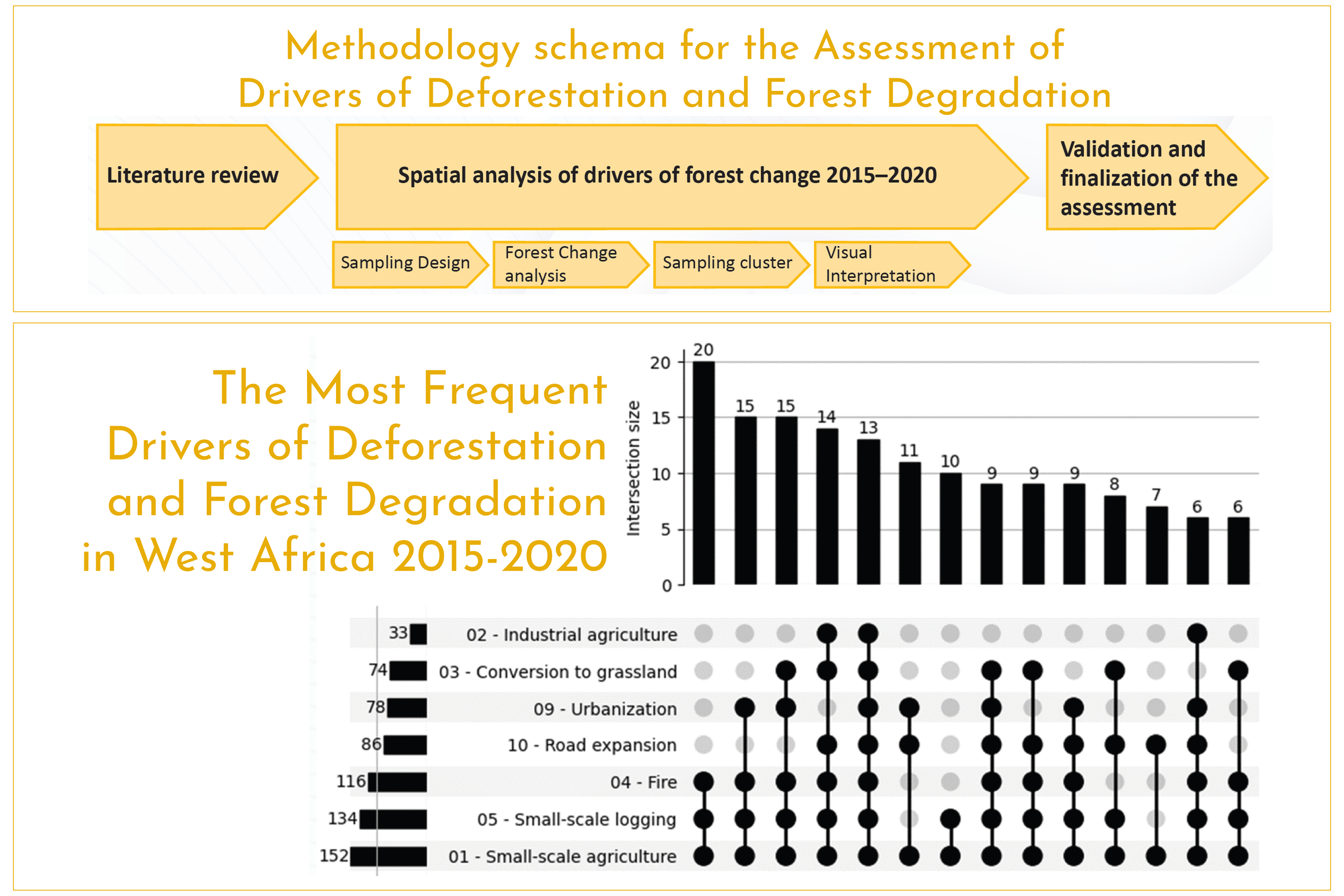
Assessment of Drivers of Deforestation and Forest Degradation in West Africa
This report presents the methodology and main findings of an assessment conducted between 2015 and 2020 to identify the primary drivers of deforestation and forest degradation in West Africa.
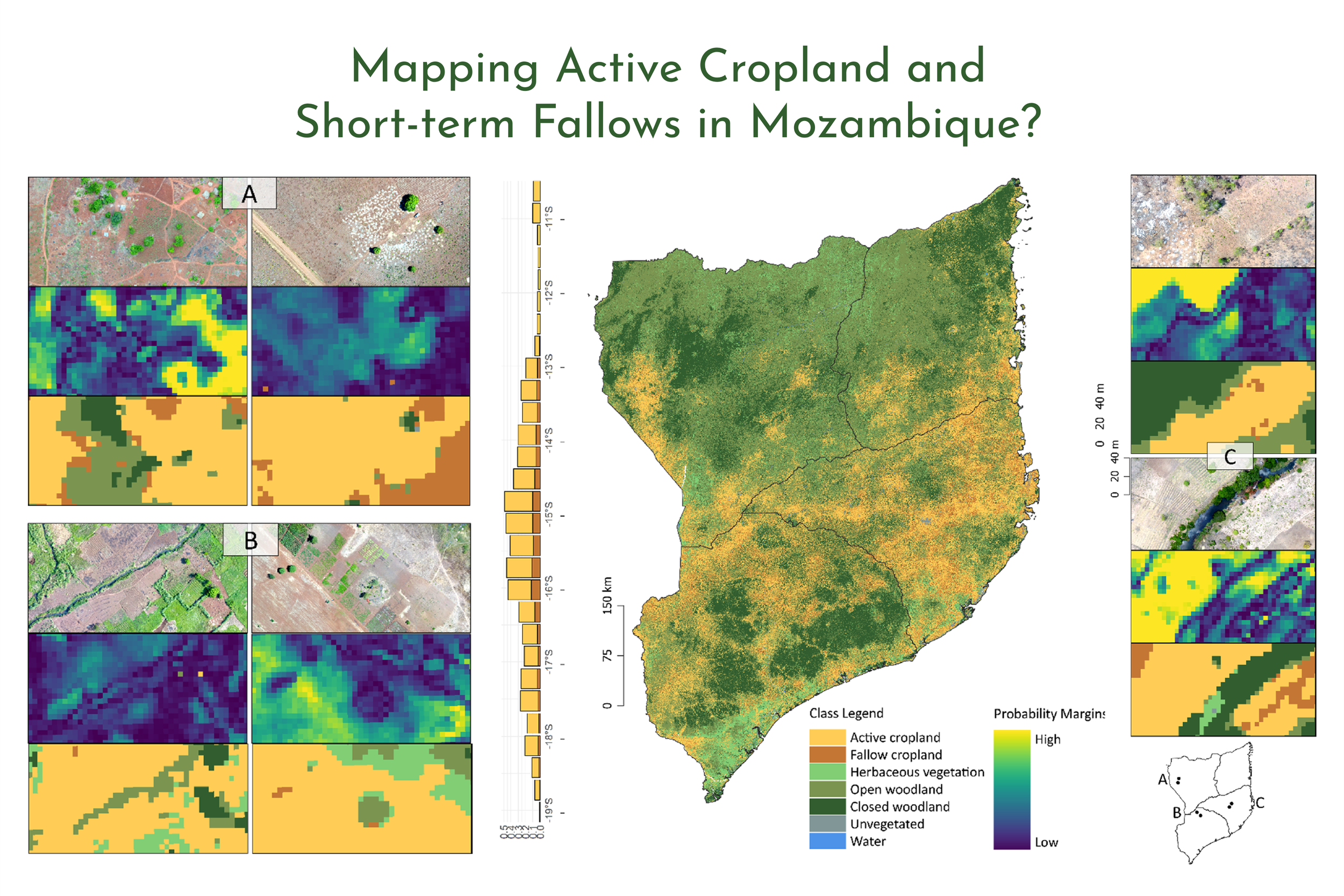
Large-Area Mapping of Active Cropland and Short-Term Fallows in Smallholder Landscapes Using PlanetScope Data
We present a large-area mapping framework to identify active cropland and short-term fallows in smallholder landscapes for the 2020/2021 growing season at 4.77 m spatial resolution.
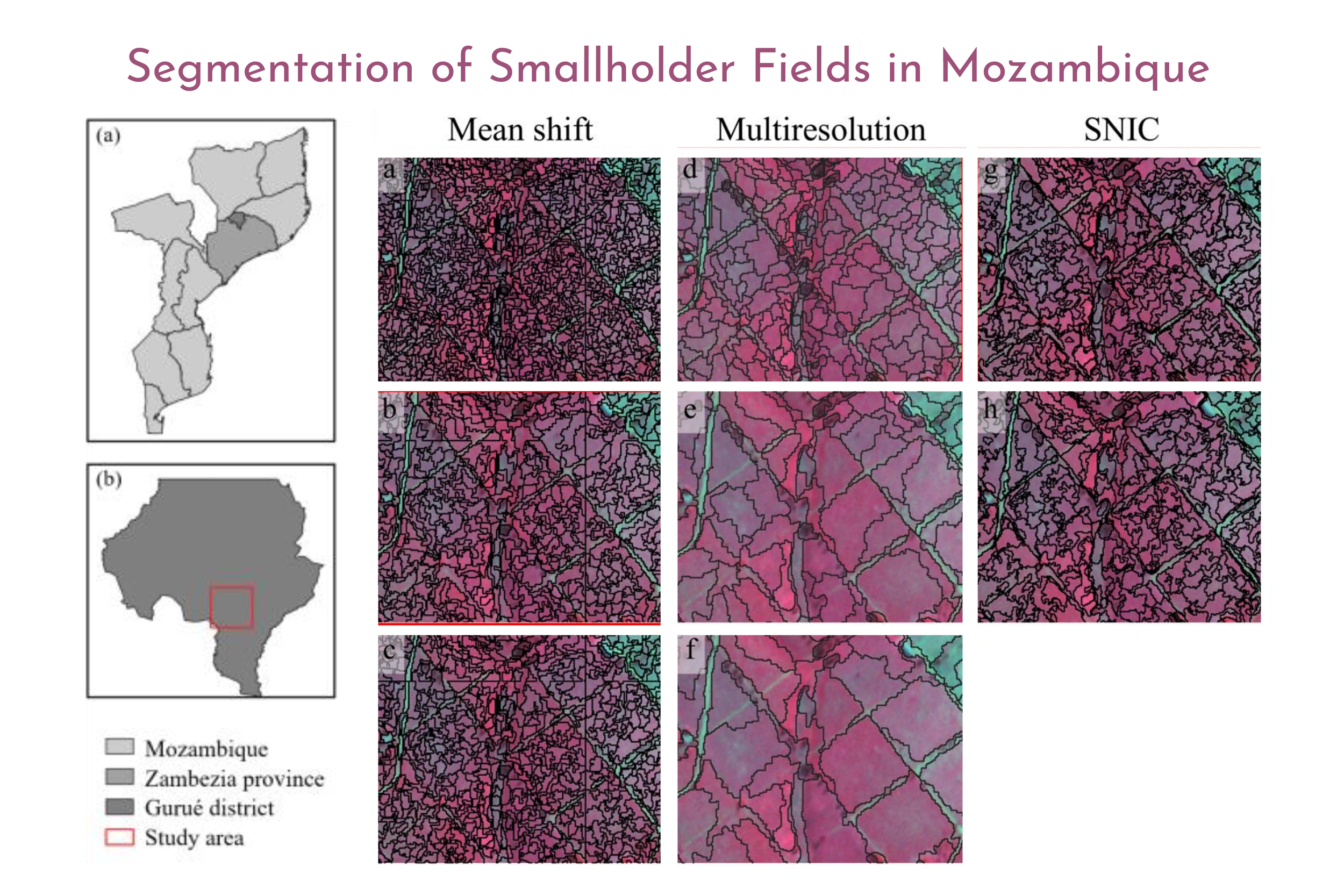
Unsupervised Segmentation Of Smallholder Fields In Mozambique Using PlanetScope Imagery
This study compared three unsupervised segmentation approaches that have not been widely explored for delineating smallholder fields: mean shift, multiresolution segmentation, and simple non-iterative clustering (SNIC), using PlanetScope imagery.
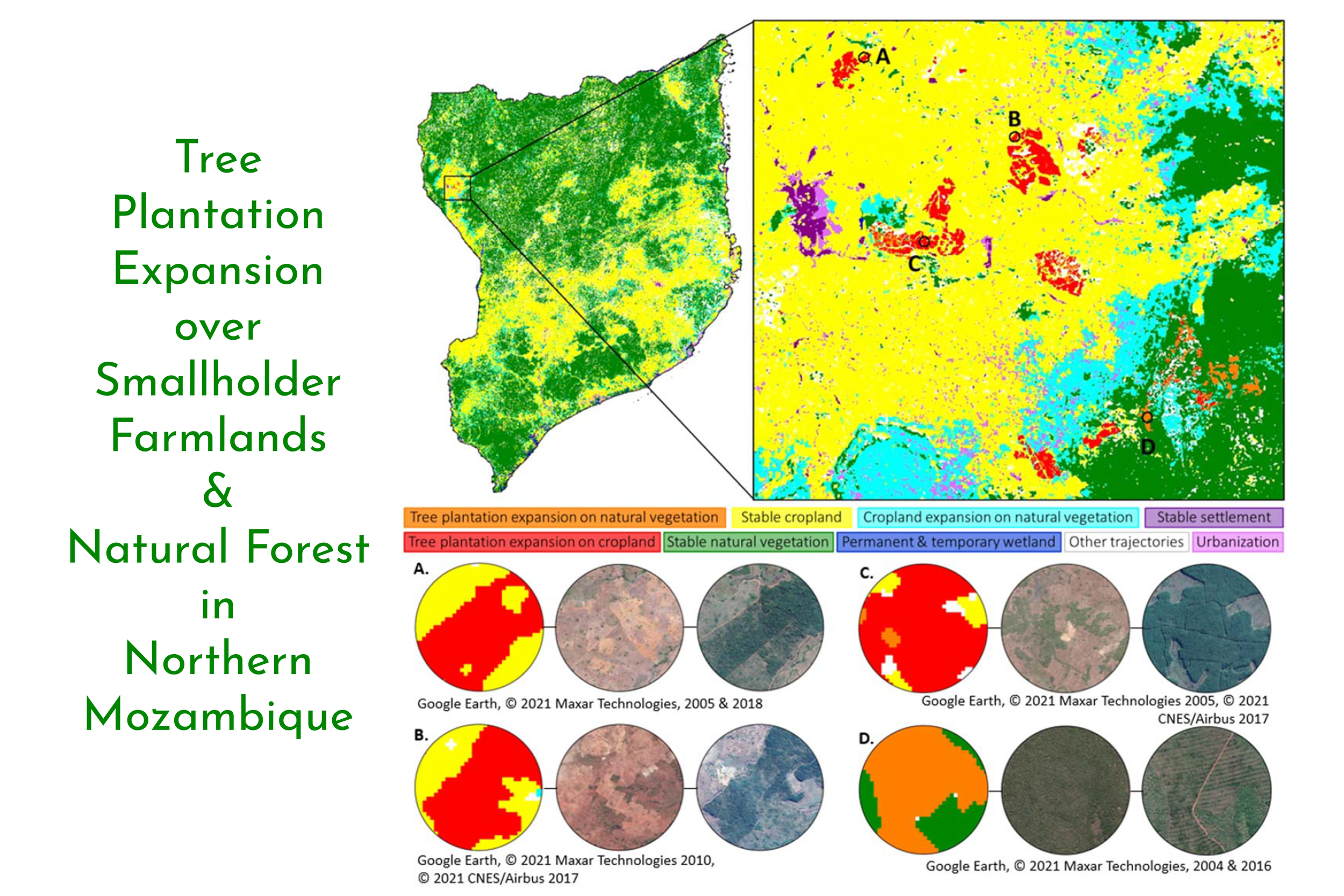
Improved Land Monitoring to Assess Large-scale Tree Plantation Expansion and Trajectories in Northern Mozambique
Tree planting has the potential to address a wide range of environmental and economic challenges. However, planting initiatives can also do more harm than good. Characteristics such as land tenure and land use before conversion to tree plantation are key to assessing the potential risks and benefits of tree planting initiatives. Here, we present a new remote sensing technique to distinguish tree plantations from natural forests, measure plantation expansion, and specify pre-conversion land use.
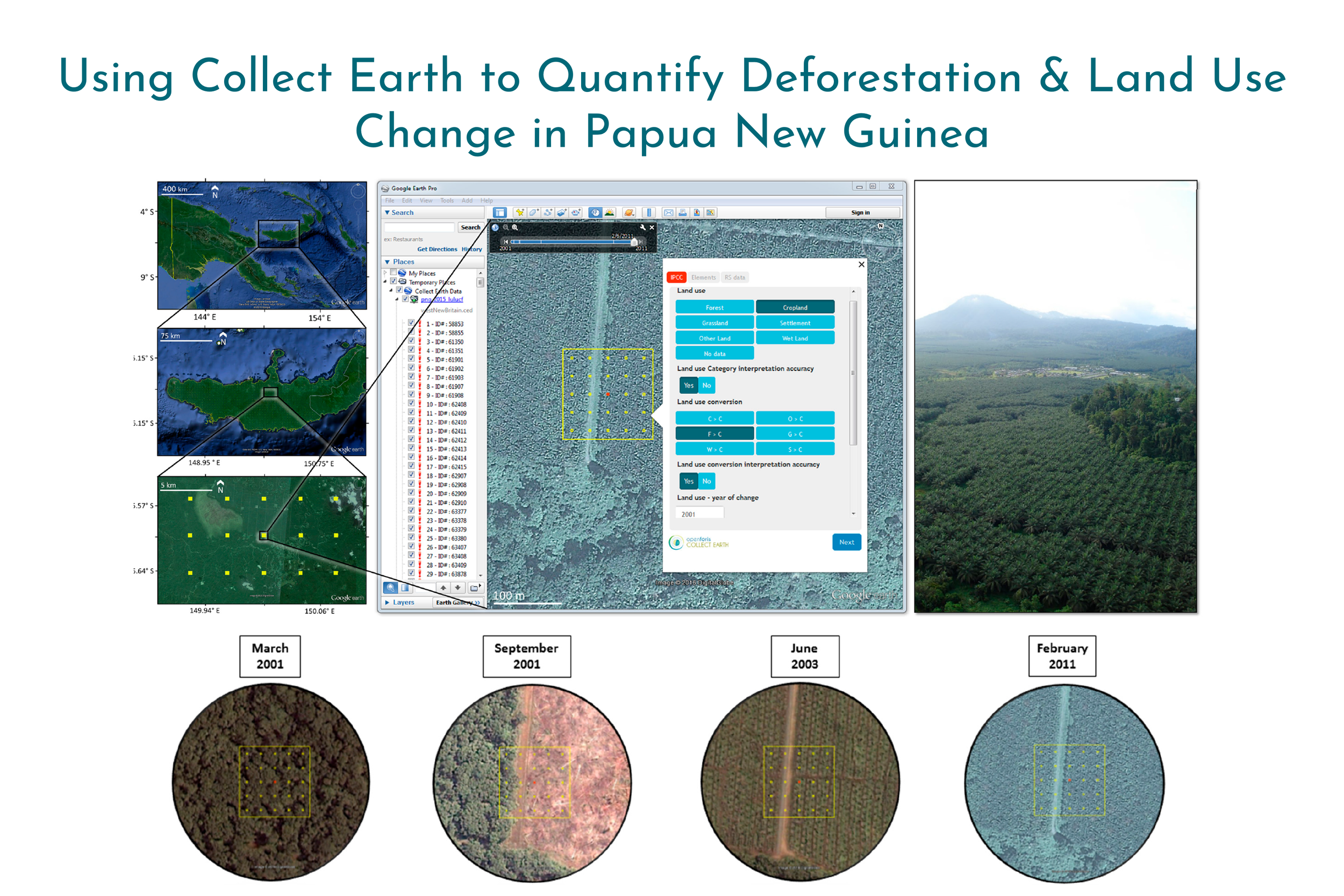
Collect Earth: Land Use and Land Cover Assessment through Augmented Visual Interpretation
Collect Earth is a free and open source software for land monitoring developed by the Food and Agriculture Organization of the United Nations (FAO). In this study, we provide a full overview of Collect Earth’s structure and functionality, and we present the methodology used to undertake land monitoring through augmented visual interpretation using Papua New Guinea as a case study.